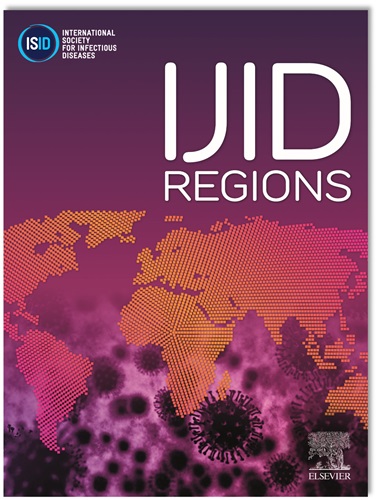Global containment policy duration and long-term epidemic progression: A target trial emulation using COVID-19 data from 2020 to 2022
IF 4.8
2区 医学
Q1 INFECTIOUS DISEASES
引用次数: 0
Abstract
Objectives
Global countries often apply containment policies (CPs) to combat infectious disease surges. Whether countries with longer cumulative duration of CPs are associated with slower long-term epidemic progression necessitates a thorough evaluation.
Methods
We collected CP and COVID-19 data of 185 territories during 2020-2022, with a total of 23 CPs. Using the target trial emulation and cloning-censoring-weighting approaches, we assessed the effectiveness of CPs with different cumulative durations in delaying countries from reaching the 1% and 10% cumulative infection incidence end points (i.e. 10,000 and 100,000 COVID-19 cases per million population, respectively) over a 3-year observation period.
Results
For reaching the 1% cumulative infection incidence, recommending closing workplaces and limiting gatherings to 10 people, each presented that a longer cumulative duration of those CPs is associated with a lower proportion of countries achieving this end point throughout 2020-2022. For reaching the 10% cumulative infection incidence, mandatory bans on public events and domestic movements, closing public transports, and screening and quarantining inbound tourists, each showed similar associations. Notably, long-lasting border bans upon high-risk regions are associated with a higher proportion of countries reaching the 10% cumulative infection incidence.
Conclusions
From the long-term perspective, we highlight CPs that warrant extending the duration to achieve slower epidemic progression. By contrast, our findings demonstrate the limited effectiveness of the ban on regions in slowing the long-term epidemic progression.
全球遏制政策持续时间和长期疫情进展:使用2020年至2022年COVID-19数据的目标试验模拟
目标:全球各国经常采用遏制政策来应对传染病激增。cp累积持续时间较长的国家是否与较慢的长期流行病进展有关,需要进行彻底的评估。方法:收集2020-2022年185个地区的CP和COVID-19数据,共23个CPs。通过使用目标-试验-模拟和克隆-审查-加权方法,我们评估了不同累积持续时间的CPs在延迟国家达到1%和10%累积感染发生率终点(即分别为每百万人口10,000和100,000例COVID-19病例)的有效性。结果:对于达到1%的累积感染发生率,建议关闭工作场所,并将聚会限制在10人以内,每个人都提出,这些CPs的累积持续时间越长,在2020-2022年期间达到这一终点的国家比例越低。累计感染发生率达到10%、强制禁止公共活动和国内人员流动、关闭公共交通工具、筛查和隔离入境游客均表现出类似的关联。值得注意的是,高风险地区的长期边境禁令与达到10%累积感染发生率的国家比例较高有关。结论:从长期角度来看,我们强调需要延长持续时间以减缓流行病进展的CPs。相比之下,我们的研究结果表明,区域禁令在减缓长期流行病进展方面的有效性有限。
本文章由计算机程序翻译,如有差异,请以英文原文为准。
求助全文
约1分钟内获得全文
求助全文
来源期刊
CiteScore
18.90
自引率
2.40%
发文量
1020
审稿时长
30 days
期刊介绍:
International Journal of Infectious Diseases (IJID)
Publisher: International Society for Infectious Diseases
Publication Frequency: Monthly
Type: Peer-reviewed, Open Access
Scope:
Publishes original clinical and laboratory-based research.
Reports clinical trials, reviews, and some case reports.
Focuses on epidemiology, clinical diagnosis, treatment, and control of infectious diseases.
Emphasizes diseases common in under-resourced countries.

 求助内容:
求助内容: 应助结果提醒方式:
应助结果提醒方式:


